The Oceania Collection
Matthias Claudius Hofmann, curator
Among the department’s oldest pieces is the collection of the missionary Carl Strehlow acquired from the Aranda in central Australia. The “Friends of the Ethnological Museum” presented the collection shortly after the museum’s founding in 1904. A collection of the Dieri in southern Australia, compiled by the missionary Otto Siebert around 1905, was presented to the museum by the Anthropological Society. Noteworthy are also the Sebald collection from Fiji (prior to 1905) and the Moolenburgh collection from north western New Guinea (prior to 1912). Aside from these, complete collections from Melanesia are very rare, though there are a few very good and relatively old single pieces. Old objects from Polynesia and Micronesia are sparse but Maori culture from New Zealand is represented by a small collection of very high quality.
Expeditions were undertaken in 1937/38 by the museum and institute staff to north-west New Guinea (Hermann Niggemeyer, Albert Hahn, Josef Röder). Helmut Petri and Agnes Schulz began collecting in 1938/39 in Australia (Kimberleys and Arnhemland). During the Second World War a large part of Australian collections were destroyed. An impressive collection of ancient bark paintings from the Kimberleys, however, survived. Petri began collecting once again in 1953/54 but was unable to compensate for the losses endured during the war.
Today, the Oceania collection is a pièce de résistance of the museum owing mainly to the comprehensive collections from the Sepik, from the Yimar of Korowori and thanks to the very old Inyai-Enga figures which were compiled between 1961 and 1963 by members of the Frobenius-Institute Meinhard Schuster, Eike Haberland and Siegfried Seyfahrt. The Oceania department is indebted to these collectors for almost all the large objects such as those unique men’s house posts, slit drums and boats. Due to the fact that in the 1960s museums invested in duplicate collections for exchange with other museums, many objects were acquired by collectors in large quantities. After these collecting journeys, however, exchanges were discontinued because they were considered as destructive practices for collecting. Hence, the Sepik collection comprises an enormous number of everyday and cult objects.
In 1986, it was for the projected exhibition “New Guinea – Use and Interpretation of the Environment” that Thomas Michel collected in the New Guinea highlands, especially from the Eipo and Nalumin (Irian Jaya). Only one year later, it was possible to purchase a collection from the Trobriand Islands that included an original Kula boat and the Yam storage house of a chief. For the exhibition “Talofa Samoa”, the curator Gerda Kroeber-Wolf travelled, in 1996, to Samoa with the aim to invest in a collection reflecting contemporary everyday and art objects.
The collection of contemporary Oceanian art was initiated by the department’s curator Eva Raabe, in 1986. In 1991, she purchased paintings and sculptures from the Australian Aborigines, and in Papua New Guinea directly from the artists with the concern to document the development of art in these areas. During a research year supported by the Australian Research Council and in the course of her investigation of contemporary art in Papua New Guinea she was able to continue building up this collection.
Today, the entire department is home to approx. 16.000 pieces. One of the aims of ongoing collecting is to document the cultural transformation and the development of contemporary art in the Pacific region.
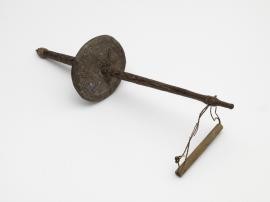 Pump drill, Tambunum, East Sepik, collected 1961.
Pump drill, Tambunum, East Sepik, collected 1961.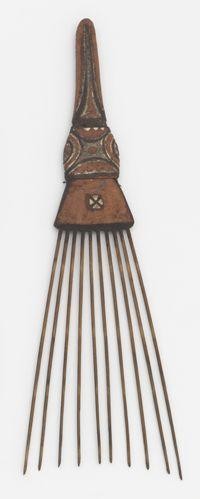 Comb, Admiralty Islands, Bismarck Archipelago, Melanesia, purchased 1928.
Comb, Admiralty Islands, Bismarck Archipelago, Melanesia, purchased 1928.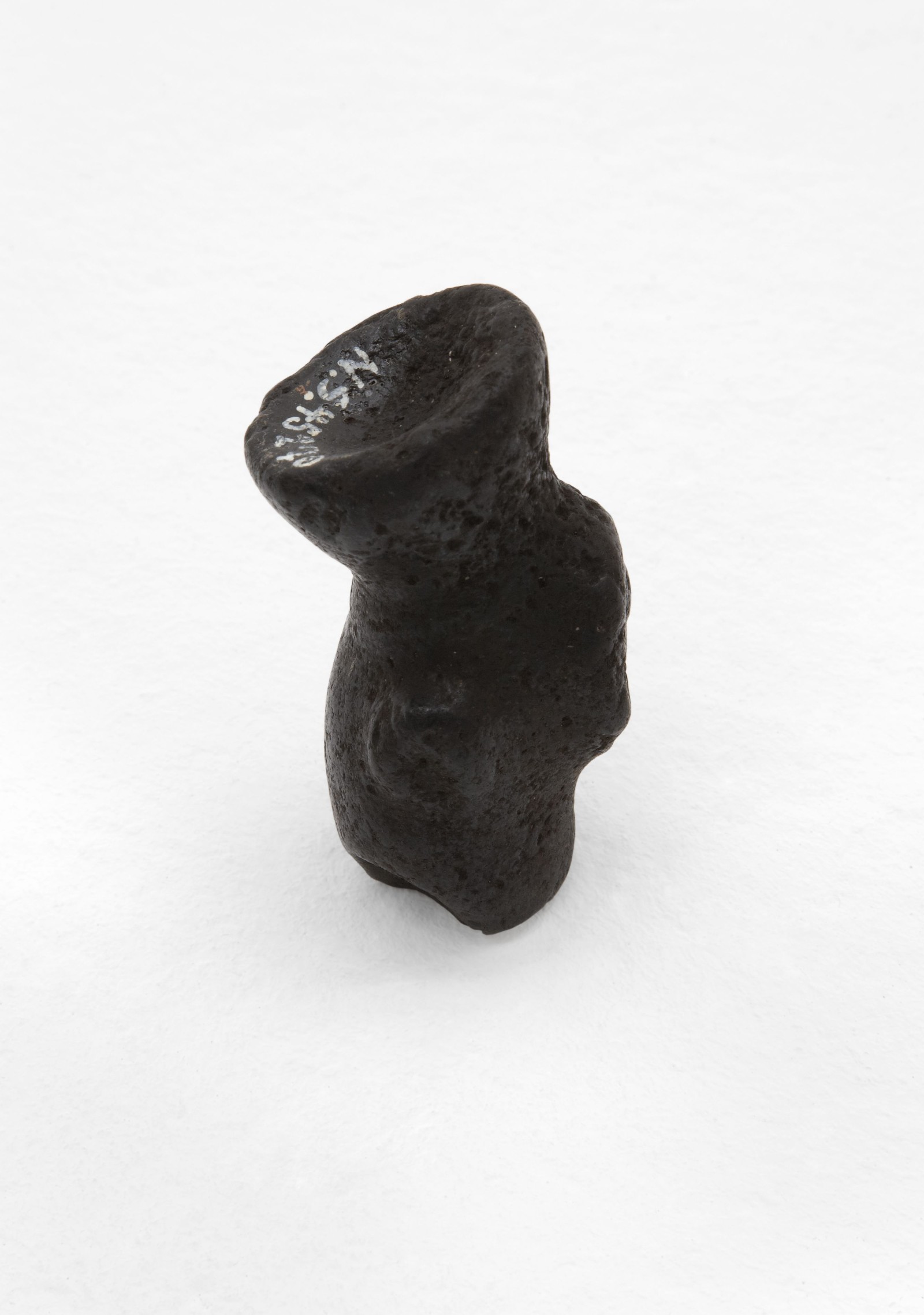 Handle of a pestle, Central Upland, Papua New Guinea, purchased 1965.
Handle of a pestle, Central Upland, Papua New Guinea, purchased 1965.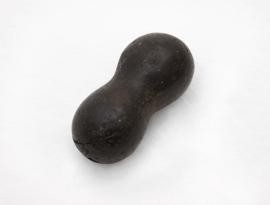 Pestle, Central Upland, Papua New Guinea, purchased 1965.
Pestle, Central Upland, Papua New Guinea, purchased 1965.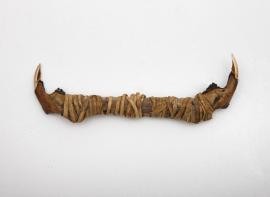 Carving tool, marsupial lower jaw and teeth, collected 1961.
Carving tool, marsupial lower jaw and teeth, collected 1961.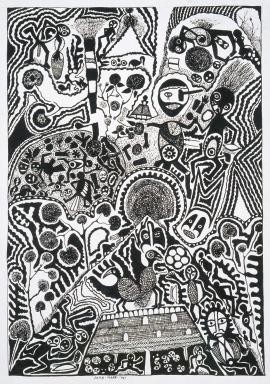 John Mann: How Mountain Kimenjim came to be, felt pen on paper, Papua New Guinea, 1991.
John Mann: How Mountain Kimenjim came to be, felt pen on paper, Papua New Guinea, 1991.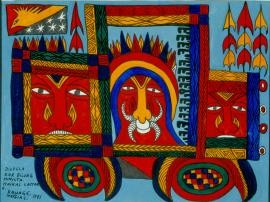 Matthias Kauage: Kar bilong Minister Michael Somare, felt pen on paper, Papua New Guinea, 1991.
Matthias Kauage: Kar bilong Minister Michael Somare, felt pen on paper, Papua New Guinea, 1991.
